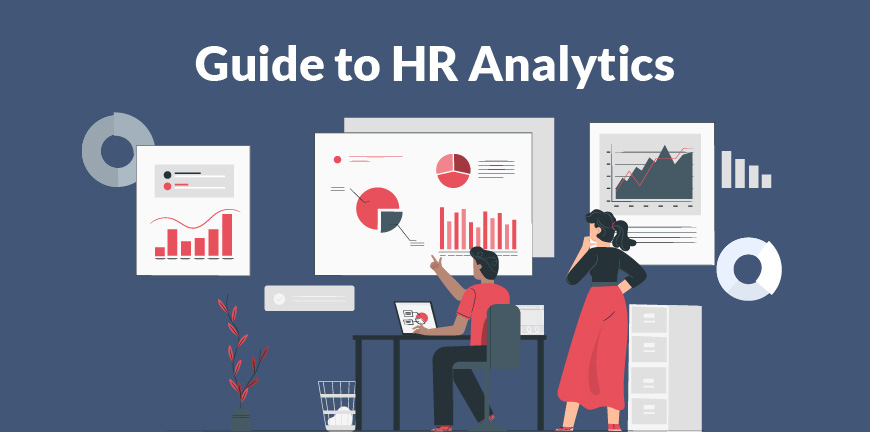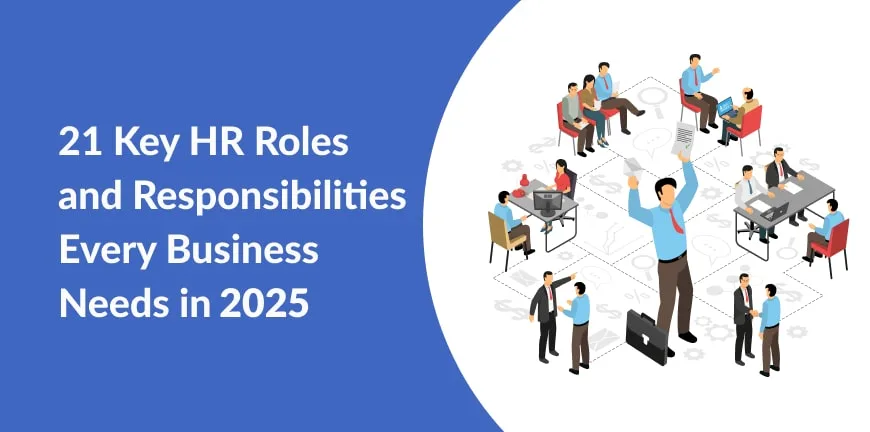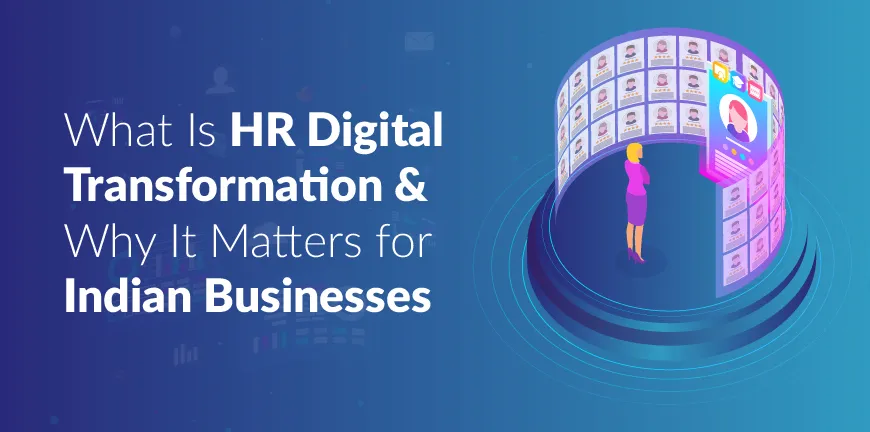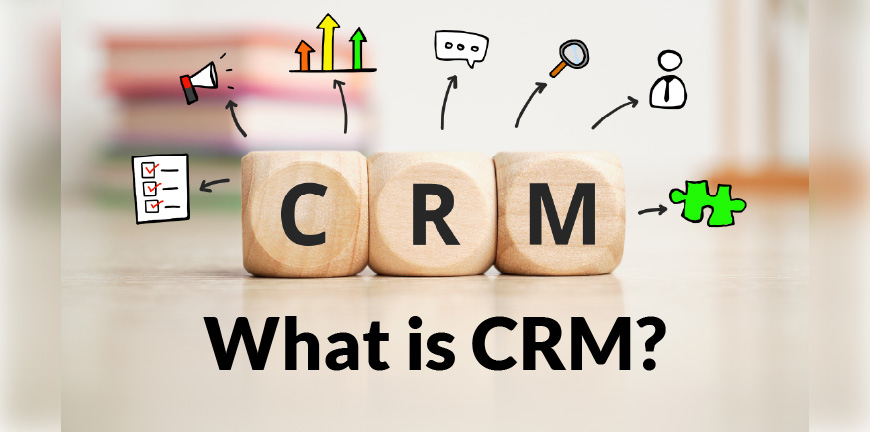
What is CRM? Definition, Types and Benefits
27/06/2023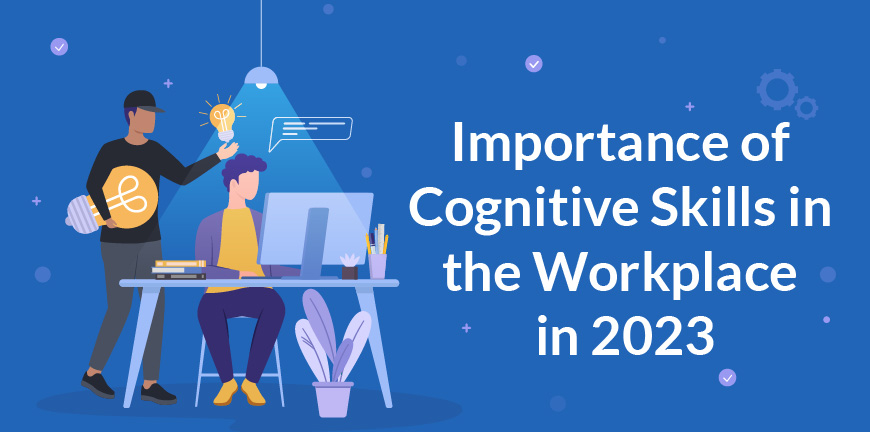
Cognitive Skills: Definition, Importance, Types
03/07/2023- What Is HR Analytics? (Meaning & Definition)
- Why Is HR Analytics Important for Organizations?
- What are the Key Objectives and Purpose of HR Analytics?
- What are the main features, functions, and roles of HR analytics?
- What is the typical HR analytics process?
- What are the Common Methods and Types of HR analytics?
- What tools and models are used in HR analytics?
- What are the Examples of HR Analytics in Action?
- What are the key benefits of using HR analytics?
- How does HR analytics help with workforce planning and decision-making?
- How does HR analytics contribute to DEI and employee experience initiatives?
- What are the most common challenges and problems in adopting HR analytics?
- Conclusion
- Frequently Asked Questions (FAQs)
How easy would it be if the HR team could predict which of their employees would excel in their roles and spot skill gaps before seeing a decline in productivity as well as know which of their employees are planning to leave, all before they could happen? That’s what HR Analytics can do. With its ability to reorganize and turn data into insights, it empowers HR explain itself better to decision makers and enable the decisions it takes on behalf of the organization. In this article, we’ll be exploring the complete guide to HR Analytics and how it can help add value and transform the HR decision process.
What Is HR Analytics? (Meaning & Definition)
HR analytics is the process of gathering and analysing HR data to help make better decisions and improve the productivity of workforce. The HR analytics process is also sometimes called as Talent analytics, or people analytics, because it analyses the large amount of data fed about the talent or people in an organization.
This is a type of data analysis that considers the data that is collected by HR, on a daily basis and turns it into patterns that gives HR an overview of how employees are performing and allow them to make better decisions. This helps organizations understand the importance of HR initiatives and how it contributes to organizational goals.
Why Is HR Analytics Important for Organizations?
HR Analytics is important as it provides companies with employee data that is meticulously organized in a pattern that helps them make better decisions. However, the importance of HR analytics far exceeds the bare minimum that is mentioned above.
By utilizing HR Analytics, descriptive and prescriptive reports can be prepared facilitating lesser employee attrition. HR analytics also boosts productivity as it gives an overview of the detailed performance of employees leading to succession planning and career development. It helps with better data security, transparency, and better access to data instilling trust in employees. HR analytics are basically insights that help in mapping out areas that need improvement leading to a higher employee satisfaction and effective HR performance.
What are the Key Objectives and Purpose of HR Analytics?
HR Analytics turns data into a useful structure which is insightful and helps organizations make better decisions. Some of the key objectives and purposes of HR analytics are-
1. Data-driven decision-making
Organizations use data to make informed decisions leading to better hiring, performance, and retention outcomes.
2. Optimizing Recruitment and talent acquisition
Effective recruitment with the help of analysed candidate data, sourcing channels and forecasting candidate success rate to hire the right talent.
3. Better employee performance
Figuring out the good and bad performers, keeping track of their progress and intervening at the right time and providing them with the right training can help improve employee performance.
4. Enhanced employee engagement and retention
With valuable data insights provided by HR analytics, factors that leading to lesser employee engagement and higher employee turnover can be detected based on which strategies can be designed to change the same.
5. Workforce planning and succession management
Future workforce needs, skill gaps can be easily identified with the help of HR analytics, helping in leadership planning.
6. Optimization of Cost and efficiency
Current HR processes can be analysed to reduce inefficiencies, unnecessary resource spending, increasing value from human capital.
7. Diversity, equity, and inclusion
With the analysis of data, it’s easy to figure out how diverse and inclusive the HR processes are and ensure a more inclusive organisation.
8. Reduce risk and maintain compliance
The analytics helps in maintaining compliance with labour laws as it facilitates identification of risk and bias, thereby avoiding legal issues.
9. Align HR with business strategy
The analysis of data makes sure that the initiatives and decisions taken by HR help organisations achieving their goals.
10. Continuous improvement
With regular assessment, a positive impact from HR processes and interventions can be ensured facilitating innovative HR practices.
What are the main features, functions, and roles of HR analytics?
HR Analytics is changing the way Modern HR functions work, and it has moved from an operational unit to a more strategic one, advancing to the term ‘strategic HR’ and aligning its efforts with the goals of the business. Some of the key features of HR analytics are-
- Metrics and KPIs to measure employee performance, engagement, and net promoter score, to help take proactive steps to improve workspaces and company reputation.
- Data visualization tools help visualize the presented data in a simple and easy-to-understand format, so that decision-makers are more empowered when they make decisions.
- Predictive analytics by using gathered data and statistics forecast future workforce trends like attrition rates, skill gaps and training needs.
- HR Information Systems automate processes like payroll, attendance benefits, management of employee records, making the collection and analysis of data a lot more efficient and useful.
- Diversity and inclusion metrics help inform stakeholders about the backgrounds the employees come from and the extent of diversity in the company, so that they can take steps to improve it.
- Recruitment metrics such as cost of hire and time-to-hire help arrive at decisions to reduce them considerably over time.
- Skill gap analysis helps identify present gaps in employee skills and what they need to be trained on to acquire the skills necessary for a new job.
- Succession planning is another much-appreciated feature of HR analytics, where it helps with deciding who will be the next manager/leader of a team/company based on previous performance and current demands and skills expected from a leader.
The main functions of HR Analytics include-
- Analysis of workforce data by collecting, structuring, and examining data on employee demographics, performance, recruitment, engagement, and retention.
- Designing and developing dashboards to effectively communicate whatever is found through the analysis to help answer questions for decision making.
- Whether its workforce planning, management of talent of formulating effective HR policies, everything is done after analysing data.
- Through predictive analysis you can anticipate future HR challenges like employee turnover and manage risks.
- See if the training, compensation, benefits, and employee development programs align with the business objectives.
The role of HR analytics or other what a HR analyst does is-
- Gathers data from HRIS, surveys performance reviews and ensure data is safe, organized to further analyse it.
- Watch out for hiring patterns, turnover, employee engagement and graph of productivity to guide HR interventions.
- Transform randomly collected data into insights to help improve recruitment, retention, leadership development and succession planning.
- Through the analysed data, helpful recommendations are offered to improvise HR leadership, and business leaders facilitating better planning
- HR analysts collaborate to come up with better talent processes, develop HR policies and help ensure compliance and legal requirements.
What is the typical HR analytics process?
The typical HR analytics process consists of steps that are designed in a sequential manner. The process of collecting data and deriving insights from it is based on the type of data analytics method that is applied.
To build an effective HR analytics strategy, here are some of the steps to implement-
Step 1: Specify objectives
What and where are the problems you are trying to solve with HR analytics, and how will you apply HR analytics to solve these problems? By specifying these objectives, you will have a better idea of how to use HR analytics to achieve your business goals.
Step 2: Identify data sources
What systems are you going to use to collect the data, and what is the level of confidence you have in the data and the sources you are obtaining the data from? This will affect the final research outcomes when you use HR Analytics tools.
Step 3: Develop HR analytics models
HR analytics models and metrics that align with the business goals must be developed. The models and metrics are developed to address common issues such as employee turnover, performance, and engagement.
Step 4: Organizing collected data
This is a very important step in the HR analytics process. By organizing the data using data labels and by assigning a data steward to take care of the data and manage it, you are now only a few smaller steps away from a good decision.
Step 5: Analyse the data
Statistical analysis and data visualization tools are then used to help identify trends and patterns in data and provide visualizations on it to stakeholders and decision makers. An example of this is the use of
Step 6: Create dashboards
Dashboards help bring the information together in a meaningful manner. Dashboards are built at this stage of the HR analytics process to gauge every KPI that is necessary for decision-making at the managerial level.
Step 7: Implement the analytics steps
The actual analytics happens in this phase using the models and metrics developed earlier, and the results are presented through the dashboards that have been created.
Step 8: Train and re-train the HR staff
The HR team must be up to date on how to use HR Analytics tools. They must be trained on how to use it to present to decision makers the challenges faced in talent management in the organization.
Step 9: Monitor outcomes, evaluate, and iterate
Are there positive outcomes like increased employee engagement, increased productivity, and reduced employee turnover? Do not maintain the AI models as they are but keep training them to get more effective and accurate over time. Adjust the metrics too if they need re-adjustment with a newer business goal.
What are the Common Methods and Types of HR analytics?
HR analytics can be classified into four types based on what they help accomplish and what methods they use to get it done. The four types of HR analytics are:
1. Descriptive HR analytics – What happened?
Using statistical data, it explains and summarizes what has happened already. It does not make any predictions for the future. A couple of examples of descriptive analytics in action in HR are:
- Analysing the average number of paid time offs availed by employees in a year.
- Comparing the attrition levels of employees over the past 5 years.
2. Diagnostic HR analytics – Why did it happen?
Diagnostic analytics is based on the same data as descriptive analytics but goes one step further and gives reasons for what happened. It identifies the patterns and anomalies within the data and then studies them further to understand what factors could contribute to them. Applying diagnostic analysis to the same two processes described earlier, we can:
- Why do employees in a certain demographic have more paid time off?
- Why has there been an increase in attrition over the past two years?
3. Predictive HR Analytics – What will happen?
It categorizes past and present data to isolate patterns and anomalies in them and develop a model to predict the future based on them. In the process, the analytical model that is built to predict the future is then evaluated by applying new data to it. Let us look at two examples of predictive analytics in HR:
- Predict the average absenteeism of employees in the next month based on inputs for that month over the past five years.
- Predict what channels and what locations must be targeted in recruiting candidates with a particular skill.
4. Prescriptive HR Analytics – How can we make it happen?
Prescriptive analytics takes predictive analytics further and analyses why something happened and what corrective measures to take to improve it further, hence the name “prescriptive.” Let us revisit the same two examples for predictive analytics and see how prescriptive analytics will modify them.
- Predict the average absenteeism of employees in the next month based on inputs for the given month over the past five years, why it is so, and how to reduce absenteeism by 25% in the next month.
- Predict what channels and what locations will provide candidates with a particular skill, why they do so, and how the messaging can be tweaked to improve recruitment in these zones?
What tools and models are used in HR analytics?
Some of the key tools used in HR analytics are-
- R: Used for statistical analysis and data visualization to handle datasets and build predictive models
- Python: One of the most popular tools offering libraries like pandas, scikit-learn to clean data, analyse, and machine learning
- Excel: Known for its accessibility and user-friendly interface facilitating basic data analysis, charts, and tables.
- Power BI: Integration with many data sources and facilitation of creating dashboards for reporting and visualization.
- Tableau: Powerful visualization capabilities helping HR professionals create dashboards for easy interpretation of data.
- Visier: Specialized workforce analytics platform with in-built models for insights like prediction of turnover, forecast promotion and workforce trends.
- Qlik: Focus on data aggregation and dashboarding, suitable for integration and visualization of complex HR datasets
- SPSS: Mostly used for analysis of statistics and conventional HR analytics, especially descriptive and diagnostic analytics.
- Crunchr, ADP Workforce Now, BambooHR: These are tools that offer analytics within HR management systems, providing reporting, dashboards, and workforce planning capabilities.
Models used in HR Analytics are-
- Descriptive Analytics: Using statistical data, it explains and summarizes what has happened already. It does not make any predictions for the future.
- Diagnostic HR analytics: is based on the same data as descriptive analytics but goes one step further and gives reasons for what happened. It identifies the patterns and anomalies within the data and then studies them further to understand what factors could contribute to them.
- Predictive HR Analytics: categorizes past and present data to isolate patterns and anomalies in them and develop a model to predict the future based on them. In the process, the analytical model that is built to predict the future is then evaluated by applying new data to it.
- Prescriptive HR Analytics: takes predictive analytics further and analyses why something happened and what corrective measures to take to improve it further, hence the name “prescriptive.”
What are the Examples of HR Analytics in Action?
Examples of HR analytics in action include- using data to effectively address absenteeism, ensure better ROI on employee training, drive diversity equity and inclusion initiatives.
- Reduces absenteeism- An American shipping company addressed absenteeism by analysing job design and engagement data. After modifying the roles and responsibilities of the job, absenteeism reduced by 6%, contractor costs dropped $100,000.
- Optimization of staffing levels- A mining firm in Botswana analysed their workforce by seeing the output of work and realised that some of the departments were overstaffed and some were understaffed. By staffing the right employees, they saw an increase in financial savings.
- Evaluating training and effectiveness- A Dutch company used A/B testing to measure the impact of employee training on store performance. The ROI on training was found to be 400% in the first year.
- Better hiring forecasts- A healthcare provider used HR analytics to map out vacancy trends and hire talent as needed, saving $4 million through proper workforce planning.
- Enhanced diversity and inclusion- A company implemented people analytics to support DEI goals, an find out attrition risks among underrepresented groups. This led to more female representation targets and better workforce management decisions.
- Prediction of employee turnover- Organizations use predictive analytics to model resignation risks, empowering managers to make targeted retention interventions.
What are the key benefits of using HR analytics?
1. Helps with talent acquisition
HR analytics helps vastly improve the hiring process itself, leading to better hiring decisions, and a reduction in talent scarcity. The talent pipeline will greatly improve, and recruiters will have a real-time view of it, including the progress that candidates have made, enabling recruiters to shortlist the right candidates.
2. Increases employee retention
HR analytics can help increase retention rates. HR analytics can analyse the number of complaints raised, view the productivity of employees, even suggest which employees need to be rewarded for their productivity. All these things can lead to higher employee retention.
3. Lowers attrition levels
You can identify disgruntled employees and ensure that it does not get to a point where they consider quitting the company and even leave your company negative feedback in the exit interview. HR analytics tools, when connected with other attendance and productivity management tools, can also help identify employees who are absenting themselves from work or who are distracted, ensuring that you identify early markers of possible dissent or resignation.
4. Improves employee experience
You can find ways to improve the employee experience too. It starts with understanding what employees generally want, especially through surveys, the results of which can be fed into the analytics system. It also entails understanding how it can be implemented, and the success of the endeavour too can be measured with an HR analytics system.
5. Helps with workforce planning
HR analytics can help with workforce planning. It can help identify current skill gaps, suggest ways to overcome them, either by internal mobility or by skills training. It can also help understand what requirements are necessary for a given position, especially those in leadership, based on what has worked in the past.
6. Increases productivity
Employee performance can be managed easily, especially when it is connected to a performance management system and attendance management system. Based on these numbers, it can say what minimum requirements are necessary for each employee, also depending on the role and the experience requirements for the job.
7. Improves workplace safety
HR analytics can help record and analyse any instances of misconduct from the employees in the office. When there are more than two or three instances, it has happened, then strict action must be taken against the employee. Any complaints can also be monitored, and the success of the resolution can also be measured.
How does HR analytics help with workforce planning and decision-making?
Predictive analytics helps in determining your future workforce requirements like the roles you would need employees for and the skills you need them to have etc. Helps HR make plans to train, hire before the appearance of skill gaps.
It helps in identifying the best recruitment channels and profiles of top performers. Eliminates bias during hiring decisions.
By analysing productivity, workload and employee performance data, organizations can determine the workforce they require to the tee and improve operational efficiency.
By analysing past hiring data, companies can predict which candidates may do well in specific roles, thereby improving the quality of hires and reducing turnover rates.
Helps in identifying skill gaps that may be lacking in the current workforce but is required for the future. Training of employees ensure ROI.
Shows the recruitment costs from start to end and helps HR and other stakeholders cut costs where necessary.
The integration of data analytics into workforce planning processes fosters a culture of data-driven decision-making within organizations.
How does HR analytics contribute to DEI and employee experience initiatives?
In terms of contributing to DEI initiatives, HR analytics helps in figuring out whether or not everyone is being paid fairly among different groups. It can also reveal if certain demographic groups have higher attrition rates than others, giving way to intervene and improve retention rates. HR analytics can assess the impact of DEI initiatives by analysing employee engagement data, ensuring employee needs are being met.
To enhance employee experience, HR analytics can list out factors contributing to employee engagement, like reward and recognition programs, work-life balance and modify accordingly. By categorizing employees based on demographics, roles etc, HR analytics can help improve engagement strategies. Employee feedback and engagement data, post analysis can help reveal statistics about employee turnover allowing creation of strategies to improve retention.
What are the most common challenges and problems in adopting HR analytics?
- Ensuring data quality, integration and lack of analytical skills within HR teams are some of the key challenges in adopting HR analytics.
- HR data is often present across various systems like HRIS, ATS making resulting in inaccuracies, inconsistencies, and difficulties integrating data.
- HR professionals who do not have the right analytical skills find it hard to interpret results from the analysis and transform them into helpful insights.
- Some stakeholders maybe against the idea of giving in to data driven decision making processes for whatever reasons they may have.
- The use of sensitive data may cause concern regarding its privacy, security, and misuse of information.
- Organizations may not have the right resources to support HR analytics initiatives
- If data is trapped in different systems, it may become hard to get a full view of workforce hindering path for improvement.
- The volume and variety of HR data can be too much for the HR team if they don’t have the ability to understand and interpret it.
Conclusion
If data is the fuel, then HR analytics is the engine that drives the organization to greater heights. Facing an HR challenge that HR analytics or your HR team cannot solve? Or think you could use a second opinion above the insights your analytics tool gives you. An HR service provider like Alp Consulting can act on your behalf, be it boosting employee productivity, a faster HRMS, or much better workforce planning.
Frequently Asked Questions (FAQs)
1. What are HR analytics meaning?
HR analytics is the process of gathering and analysing HR data to help make better decisions and improve the productivity of workforce.
2. Why is HR analytics important in human resource management?
Using HR analytics and reporting can help you make better, more effective plans for the future, and improve business productivity and performance.
3. How does HR analytics differ from basic HR metrics or reporting?
HR metrics tell us things like how many employee relations cases we’ve handled or how long they took to close. Analytics reveals why certain patterns show up, what they mean and how we should respond.
4. What are the top benefits of using HR analytics?
HR analytics enables you to track and analyse employee performance metrics, identify high-performing individuals, and recognize areas for improvement.
5. What types of data are used in HR analytics?
Descriptive, diagnostic, predictive, and prescriptive are the 4 types of data used in HR analytics.
6. How does HR analytics help in workforce planning?
Predictive analytics use historical data to forecast future talent requirements, attrition rates, skill gaps and hiring needs. This allows better workforce planning.
7. Can HR analytics improve employee retention?
Yes, Employee feedback and engagement data, post analysis can help reveal statistics about employee turnover allowing creation of strategies to improve retention.
8. What technology or tools are used in HR analytics?
Excel, SPSS, and Python for data analysis, alongside platforms like Tableau, Power BI, and Qlik for data visualization and dashboarding are some of the common tools used.
9. How does HR analytics contribute to diversity, equity, and inclusion?
In terms of contributing to DEI initiatives, HR analytics helps in figuring out whether or not everyone is being paid fairly among diverse groups.
10. How can organizations build their HR analytics capabilities?
Organizations can build HR analytics capabilities by developing data-driven cultures, investing in data infrastructure and analytics tools, building a skilled HR analytics team, and fostering a culture of data-based decision-making.

Rajkumar Shanmugam
Rajkumar Shanmugam is the Head of HR at ALP Consulting, bringing over 19 years of comprehensive HR leadership experience across India and international markets. His expertise spans talent acquisition, employee relations, performance management, compliance, and HR transformation. Rajkumar has a proven track record of driving people-centric initiatives, enhancing workplace culture, and aligning HR strategy with business goals. With extensive experience in US staffing operations and global mobility, he continues to lead organizational excellence through innovation and employee engagement.

